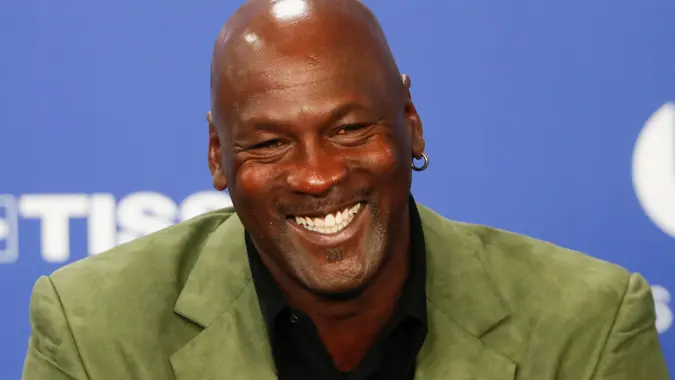Here’s the Minimum Net Worth To Be Considered the Top 1% in Your 60s

Commitment to Our Readers
GOBankingRates' editorial team is committed to bringing you unbiased reviews and information. We use data-driven methodologies to evaluate financial products and services - our reviews and ratings are not influenced by advertisers. You can read more about our editorial guidelines and our products and services review methodology.

20 Years
Helping You Live Richer

Reviewed
by Experts

Trusted by
Millions of Readers
Ever wonder how your nest egg stacks up as you near retirement? If you’re in your 60s and curious about what it takes to break into the elusive top 1%, you’re not alone. According to the Federal Reserve, the median net worth for Americans in their late 60s and early 70s is $266,400.
That’s much, much lower than what the elite are working with.
Read More: Here’s the Line Between Middle Class and Upper-Middle Class in Every State
Find Out: 6 Subtly Genius Moves All Wealthy People Make With Their Money
“People often assume that a few million dollars in savings places them at the summit of the wealth ladder, yet the numbers tell a different story once you compare yourself with the true top one percent,” said Andrew Gosselin, CPA, personal finance expert, and senior contributor at Save My Cent.
Whether you’re just getting serious about wealth-building or already eyeing early retirement, here’s what you need to know about the net worth benchmarks that define the financial elite in your age group.
You Need at Least $11 Million
“To be in the top 1% wealth bracket in your 60s, you’re typically looking at a net worth north of $11 million in the U.S., though this varies depending on the state you live in,” said Michael Foguth, founder of Foguth Financial Group. “But here’s the thing, chasing that number alone won’t guarantee peace of mind.”
Gosselin agreed, noting that a person in their sixties usually needs between eleven and thirteen million dollars to break into that elite club in the United States.
The threshold climbs because assets must cover not only daily living but also medical costs, longer life spans, and rising prices that quietly shrink the buying power of every dollar.
“A nest egg that looked enormous twenty years ago can feel average when groceries, travel, and housing have each ratcheted up in cost,” Gosselin explained.
Discover Next: 7 Signs You’re Quietly Getting Rich, According to Frugal Living Expert Austin Williams
Let’s Break It Down
Inside that eleven to thirteen million target, Gosselin said the balance sheet of a typical one-percenter in their sixties often starts with a primary home valued near a million dollars.
Add a rental property or two that contribute both appreciation and steady cash flow and you edge closer to the mark.
Retirement accounts such as a 401(k) or IRA frequently carry another million or more because long stretches of tax-advantaged growth compound quietly in the background.
“A diversified mix of stocks, bonds, and alternative holdings like private equity fills in several hundred thousand more and guards against relying on a single asset class,” said Gosselin.
Moreover, cash reserves of at least one hundred thousand remain essential for unplanned events, allowing other investments to keep working without forced sales when markets dip.
The Top 1% Is Relative Globally
Gosselin explained that a net worth of about one million dollars can secure top one percent status worldwide, though that figure varies greatly from one country to another.
Residents of Monaco, for example, may still need well over twelve million to stand out, while families in emerging economies reach the same percentile with much less.
Location, therefore, plays a pivotal role in how far each dollar stretches and how exclusive a wealth bracket is.
But according to Foguth, what matters at that stage in life is how well your money supports your lifestyle. “Are your retirement goals covered? Do you have a plan for healthcare and legacy giving?”
He’s worked with clients who aren’t in the top 1%, but said they sleep better at night than some who are, simply because they’ve got a solid financial plan in place.
“Wealth is relative, and in your 60s, the goal should be financial freedom, not just financial flex,” said Foguth.
 Written by
Written by  Edited by
Edited by 

























